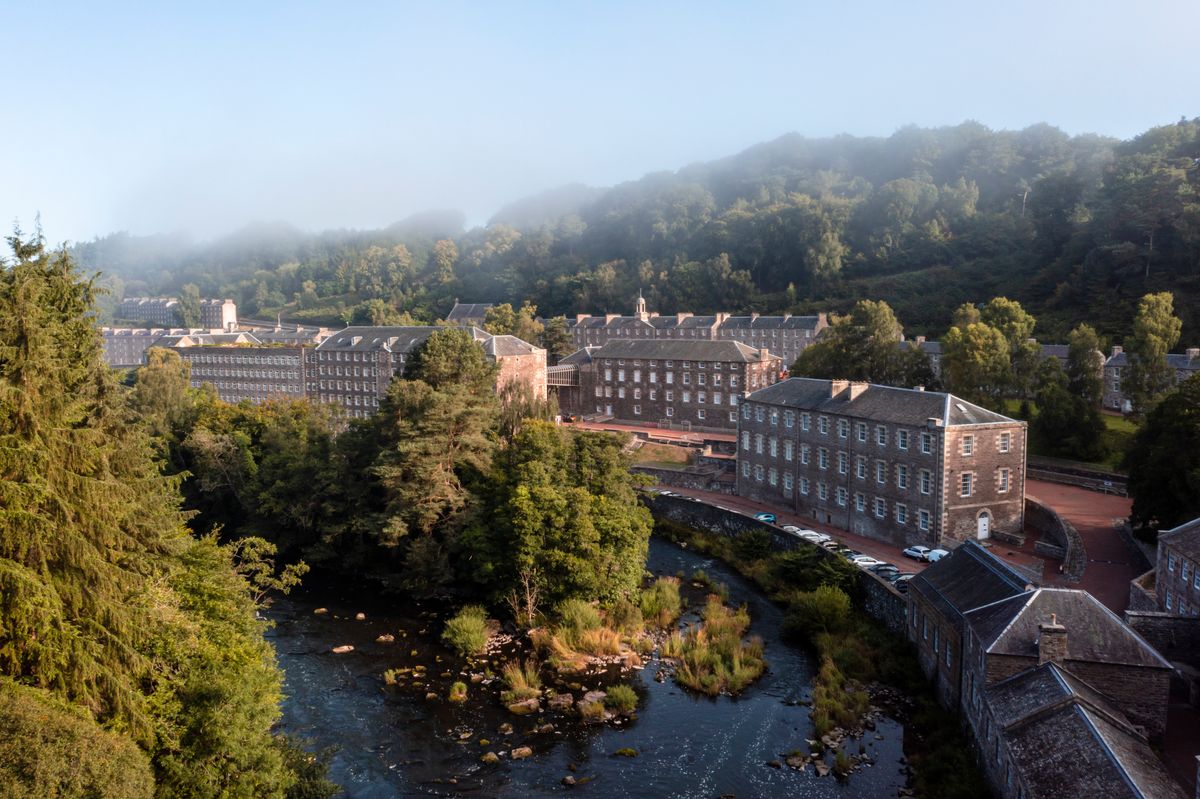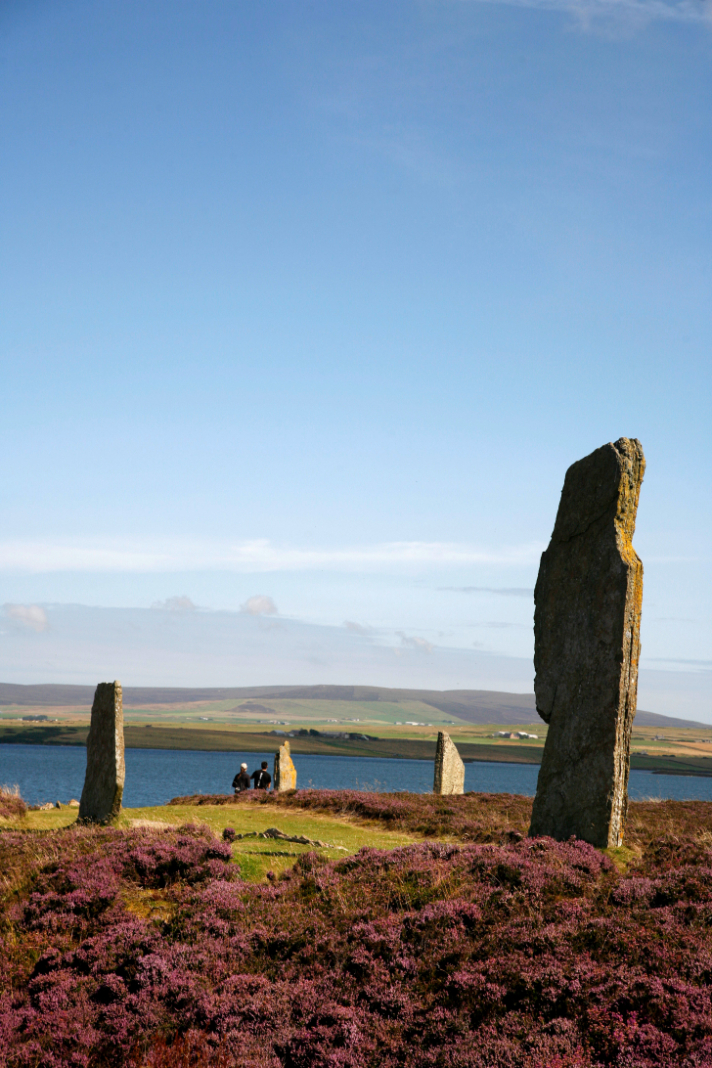
UNESCO sites in Scotland: where to find them?
Scotland, a land of rich cultural and historical heritage, proudly safeguards sites recognized for their universal value by UNESCO. These landmarks, standing as enduring testaments to human history and ingenuity, form the backbone of Scotland’s World Heritage treasures.
When planning your trip to Scotland, you’ll have the opportunity to explore these extraordinary sites, where ancient stones tell tales of a fascinating past. This guide introduces you to Scotland’s UNESCO World Heritage Sites, offering insight into their historical significance and cultural importance.
UNESCO World Heritage Sites in Scotland: A Journey Through History
We begin with a brief history of heritage preservation in Scotland, shedding light on its origins and the value placed on these iconic locations over the centuries. Then, we take you on an immersive journey through the Neolithic Heart of Orkney, explore the charm of Edinburgh’s Old and New Towns, and marvel at the engineering brilliance of the Forth Bridge. These must-visit historical landmarks offer an unforgettable experience, each unveiling a unique chapter of Scotland’s rich past. Whether you are a history enthusiast, an architecture admirer, or a curious traveler, UNESCO sites in Scotland promise an enriching adventure.
📍 New Lanark below

Our great Scottish trips...
Introduction to Scotland’s UNESCO World Heritage Sites
Scotland, a land of legends and history, is home to some of the world’s most treasured heritage sites. For centuries, it has safeguarded its cultural and natural wonders, ensuring their preservation for future generations. Aligned with UNESCO’s mission, Scotland remains committed to protecting and promoting its extraordinary legacy.
A Brief History of Heritage Conservation in Scotland
The dedication to preserving Scotland’s heritage dates back centuries, long before modern conservation efforts. From medieval castles to prehistoric ruins, the country’s historic monuments serve as tangible links to its rich past. Each stone, each structure tells a story of Scotland’s cultural evolution.
Over time, organised efforts to protect these invaluable sites gained momentum, with dedicated institutions stepping in to shield them from natural decay and human impact. Today, these conservation initiatives ensure that Scotland’s historical landmarks continue to inspire and educate generations to come.
The Importance of UNESCO and the Selection Criteria
Being designated as a UNESCO World Heritage Site is a prestigious recognition that affirms a location’s Outstanding Universal Value. To qualify for this status, a site must meet at least one of the criteria established by this global organization. These criteria encompass a wide range of significance, from architectural masterpieces and geological wonders to living traditions that embody ancestral cultural heritage.
In Scotland, UNESCO-listed sites are as diverse as they are captivating, each offering a unique journey through time and Scottish culture.


The Neolithic Heart of Orkney
Historical Overview of the Site
At the northernmost reaches of Scotland, the Orkney Islands unveil a landscape where time stands still. Here lies an extraordinary collection of prehistoric monuments known as the Neolithic Heart of Orkney. Designated a UNESCO World Heritage Site in 1999, this archaeological treasure offers a remarkable glimpse into life over 5,000 years ago. These well-preserved ruins rank among the oldest in Europe, providing visitors with a rare opportunity to step back into an era when early civilizations built imposing stone structures beneath Orkney’s ever-changing skies.
Key Monuments of the Neolithic Site
The Neolithic Heart of Orkney consists of several major landmarks, each contributing to a unique historical tapestry:
- Skara Brae – A remarkably well-preserved prehistoric village offering an intimate look at daily life in the Neolithic era.
- The Ring of Brodgar – A mysterious stone circle with an unknown purpose, possibly linked to ancient rituals and celestial observations.
- Maeshowe Chambered Tomb – A monumental burial site, carved into the earth, featuring Viking-era runic inscriptions on its inner walls.
- The Standing Stones of Stenness – The oldest known henge in Scotland, believed to be a site of ancient ceremonies and astronomical alignments.
These awe-inspiring sites remain architectural and spiritual enigmas, continuing to captivate researchers and visitors alike. They stand as lasting testaments to humanity’s ingenuity, demonstrating an enduring ability to shape the environment in ways imbued with deep cultural and historical meaning.

Edinburgh’s Old and New Towns
A Unique Blend of Architecture and History
Edinburgh’s Old and New Towns offer a striking contrast in urban design. The Old Town’s medieval closes and dark Gothic architecture stand in harmony with the New Town’s elegant Georgian symmetry, showcasing the city’s evolution and securing its UNESCO World Heritage status.
Historic Landmarks
The Old Town is home to Edinburgh Castle, a symbol of Scotland’s heritage, and the Palace of Holyroodhouse, the monarchy’s Scottish residence. Along the Royal Mile, landmarks like St Giles’ Cathedral enrich the city’s historic charm.
The New Town embodies Enlightenment ideals with grand squares and wide avenues. Architectural highlights include Charlotte Square, designed by Robert Adam, reflecting a vision of order and refinement.
Edinburgh’s seamless blend of past and present makes it a living testament to Scotland’s cultural and architectural legacy.

The Forth Bridge: Scotland’s Engineering Icon
A Masterpiece of 19th-Century Engineering
Spanning the Firth of Forth since 1890, the Forth Bridge is a pioneering feat of engineering and a symbol of Scotland’s industrial prowess. Designed by Sir John Fowler and Sir Benjamin Baker, this cantilever railway bridge required 54,000 tonnes of steel and years of skilled labor to complete. Its bold design overcame major technical challenges, setting new standards in bridge construction.
A Scottish Landmark with Global Recognition
Connecting Edinburgh and Fife, the Forth Bridge has played a vital role in Scotland’s transport network for over a century. During both World Wars, it was crucial for military logistics. Recognized as a UNESCO World Heritage Site in 2015, it remains a marvel of industrial ingenuity and a must-visit attraction.
Admiring the Forth Bridge isn’t just about its grandeur—it’s about experiencing a piece of history that continues to inspire.





